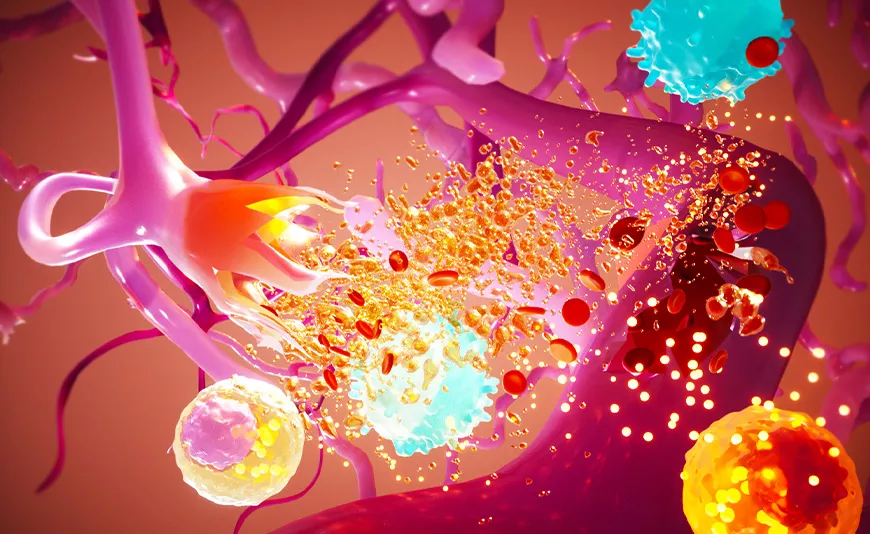Diabetic retinopathy
The eyes of people with diabetes are particularly fragile. Diabetic patients are only aware of visual symptoms in the event of complications (haemorrhage, retinal detachment, etc.), i.e. at a stage of development when the visual prognosis becomes very guarded, with a risk of blindness.
Disease simulation

Definition and symptoms
What is diabetic retinopathy?
Diabetic retinopathy is a complication of diabetes mellitus. It’s manifested by the alteration of the blood vessels of the retina. Weakened vessels can have microaneurysms, lead to edema and retinal hemorrhages.
Poor retinal irrigation can induce a proliferation of abnormal vessels that can eventually lead to irreversible damage.
Some severe forms can lead to blindness.
Who can be affected by diabetic retinopathy?
It affects both adult men and women. More than 1 million people suffer from it in France (40% of diabetics).
How does it affect patient?
At first, no signs are felt. It’s important to consult an ophthalmologist for prevention when you suffer from diabetes. Diabetic retinopathy is manifested by an alteration of the visual field. The location of the damage varies greatly from patient to patient.
Diabetic macular edema (damage to the central region of the retina) can cause a decrease in visual acuity (blurred vision) despite appropriate optical correction.
Treatments for Diabetic Retinopathy
The treatment of diabetic retinopathy is primarily based on the control of blood sugar levels and the control of risk factors and in particular high blood pressure. Regular follow-up with an ophthalmologist (with fundus examination) allows any complications to be detected early.
Laser treatment can sometimes prevent the proliferation of neovessels and destroy them.
Drug treatments by intravitreal injection may be proposed (anti-VEGF, corticosteroids).
Some severe forms may require surgical treatment (vitrectomy).
Possible difficulties faced by people with diabetic retinopathy
Patients with diabetic retinopathy have difficulty reading information on a screen: the internet, reading an email, subtitles, or reading a book, newspaper, magazine, etc. Recognising faces and locating information becomes more complicated, especially on the street: a street sign, a building number, pedestrian lights, etc. or in front of a computer station: information on an unknown website, in a spreadsheet, etc.
Research by the Institut de la Vision
Towards treatment in the early phase of diabetic retinopathy
In a recent issue of the Journal of Clinical Investigation, Xavier Guillonneau's group (from the "Inflammation in Retinal Pathologies" team led by Florian Sennlaub) demonstrates for the first time that cells of the immune system (macrophages) with a lipid overload accumulate in regions of the retina with micro-hemorrhages characteristics of diabetic retinopathy. The team found a way to pharmacologically reduce the inflammatory response and degeneration of microvessels.

> Link to the news "Macrophages expressing a marker of lipid overload accumulate in the retina of diabetic patients and promote microvascular degeneration"
Towards a simplified, non-invasive treatment of macular edema
Prof. Michel Paques' team has developed a new therapy for diabetic macular edema. This treatment, called Indocyanine-green Guided Targeted Laser (IGTL) is a lace-focused impact targeted on lesions that are called TelCaps. This term is short for capillary telangiectasia, small capillary dilatations that are accompanied by a loss of tightness and thus the creation of edema around this lesion. In a number of cases, this approach makes it possible to completely eliminate the need for intravitreal injections.

